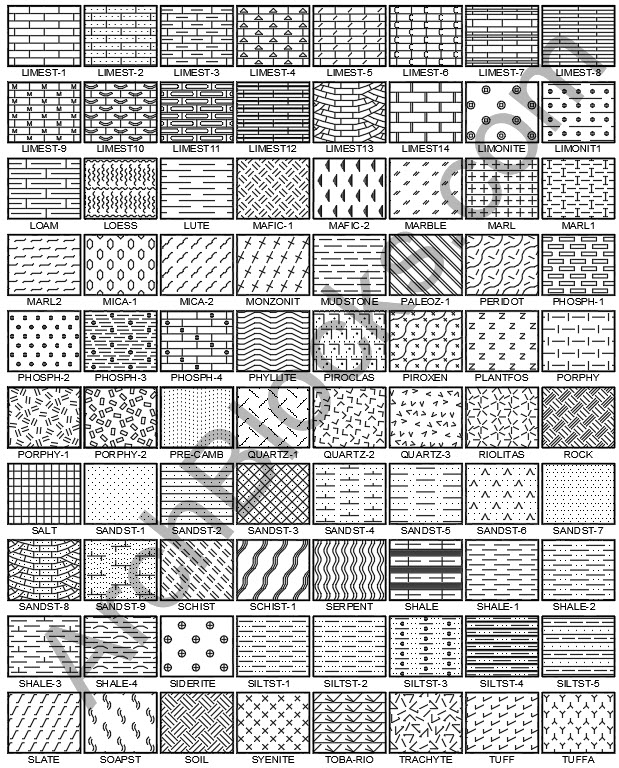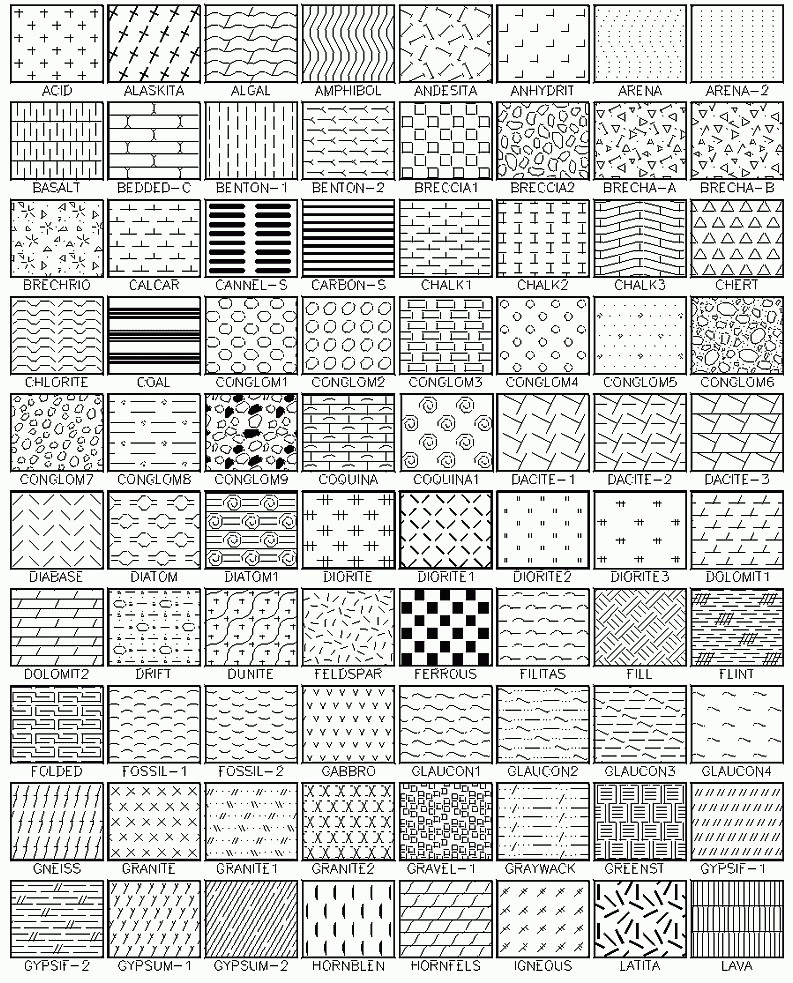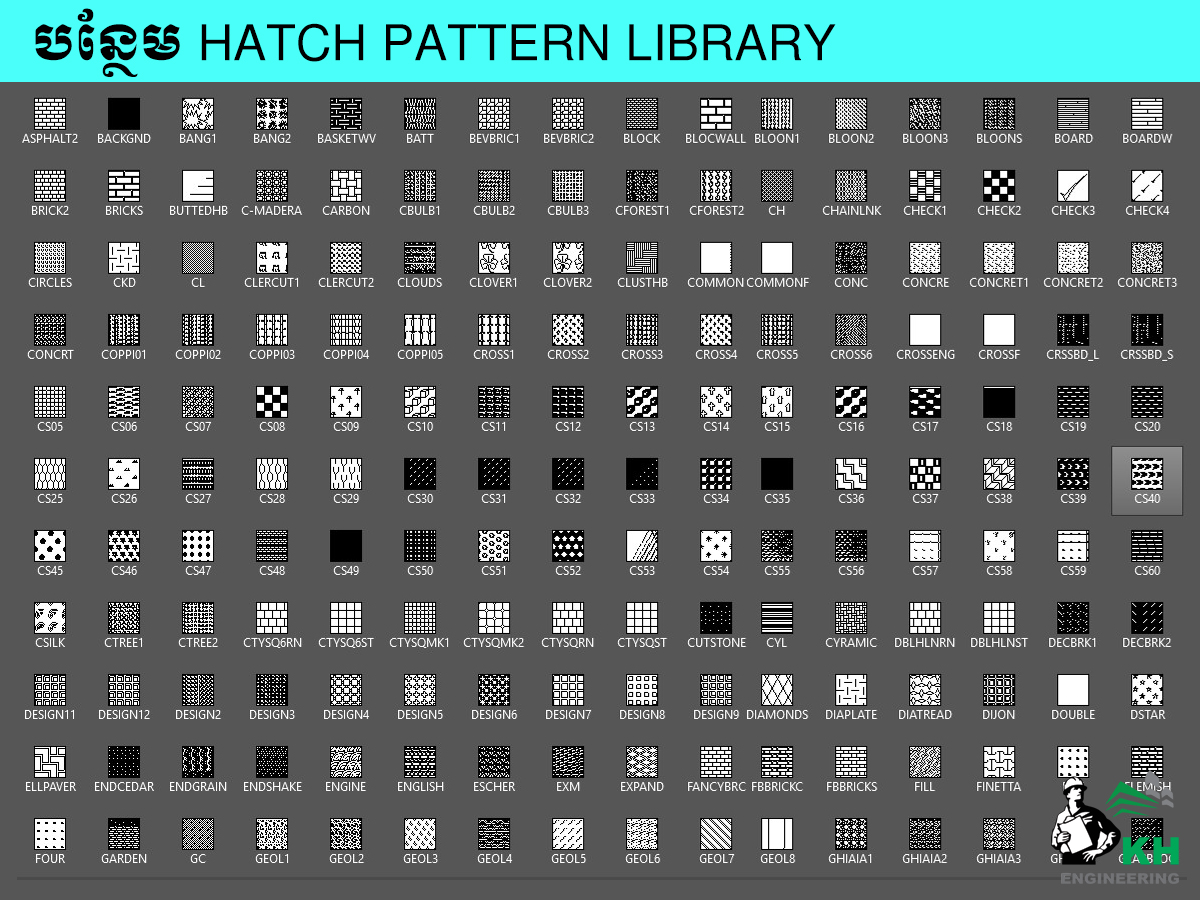

Let's take a look at a simple hatch pattern first. Linetypes are used extensively throughout hatch patterns and a good understanding is a pre-requisite. It's the complicated ones that take time, effort, a good understanding of how to create hatches and linetypes, some knowledge of geometry and quite a bit of imagination.īefore proceeding with this tutorial, I would strongly recommend that you read my tutorial on creating custom linetypes. Honestly, though, simple hatch patterns are quite easy to create.

Creating the patterns in separate files ensures that if the software is re-installed these files are not over written.You want to what?! Create a hatch pattern? Crikey, you're brave. Flembond.pat) and placed in the support folder where the acad.pat and acadiso.pat are located.ĭo not edit these files (acad.pat or acadiso.pat) and add the code to them. This should be saved to its own *.pat file (e.g. The edited *.pat file then looks like this The resulting dimensioned layout is as follows.

My new hatch pattern required brick sizes of 240 x 50 and 115 x 50 and a mortar thickness of 15mm. To understand and verify the offset distances you can create a dimensioned layout of the existing hatch pattern. To fully understand this I have illustrated each character set. *HBFLEMET,Brickworkflemishbond Free patterns from Įach line of code represents a line in the hatch pattern.

To edit the *.pat, you open it in Notepad. The file that I found had brick sizes of 215 x 65 and 102.5 x 65 and a 10mm mortar thickness. I was then told that they wanted specific brick sizes, so I replied that you can just edit the file to represent the brick size you require. My immediate response was that if you search the internet you will find one that already exists and I did. I was asked recently to create a Flemish bond hatch pattern.


 0 kommentar(er)
0 kommentar(er)
